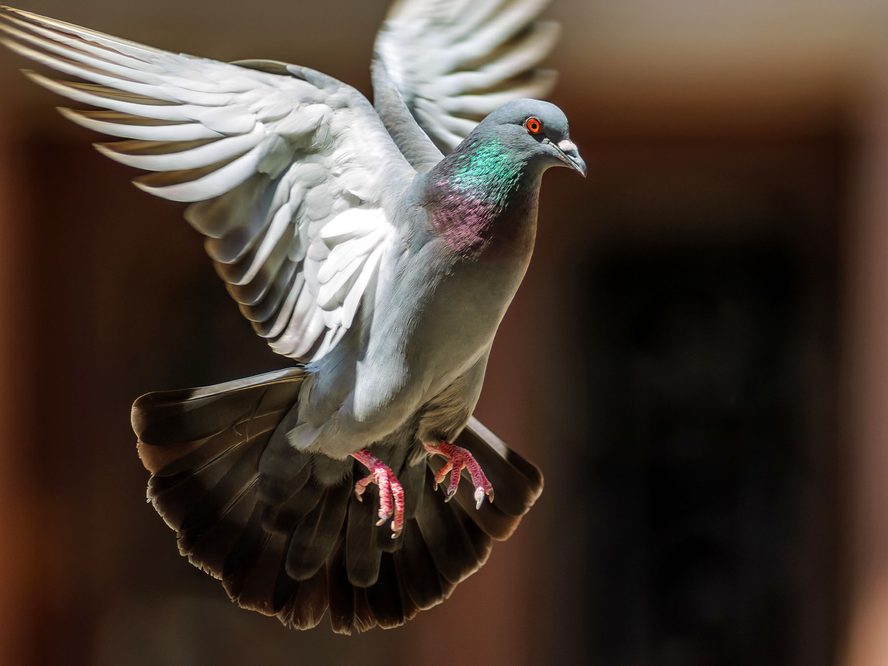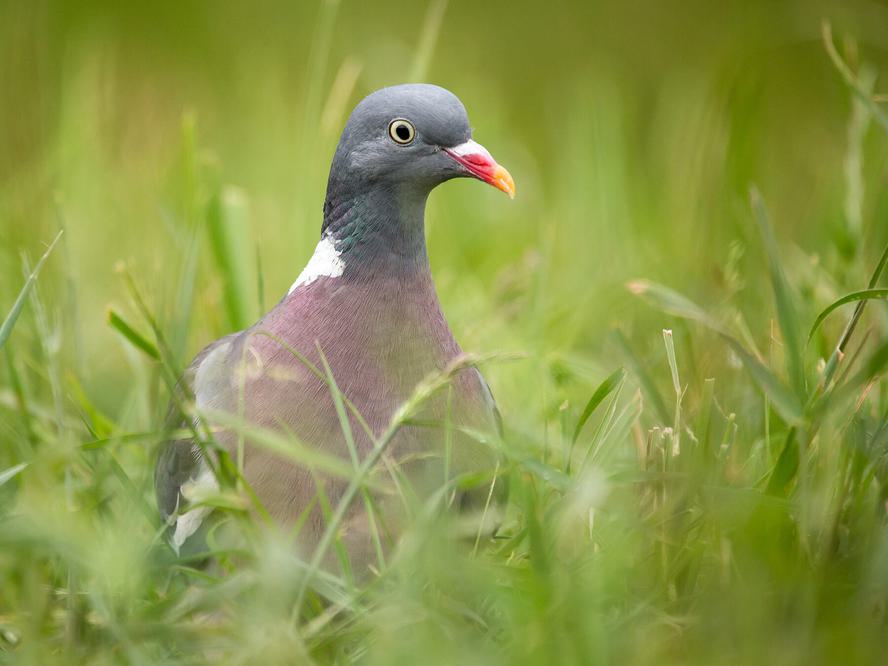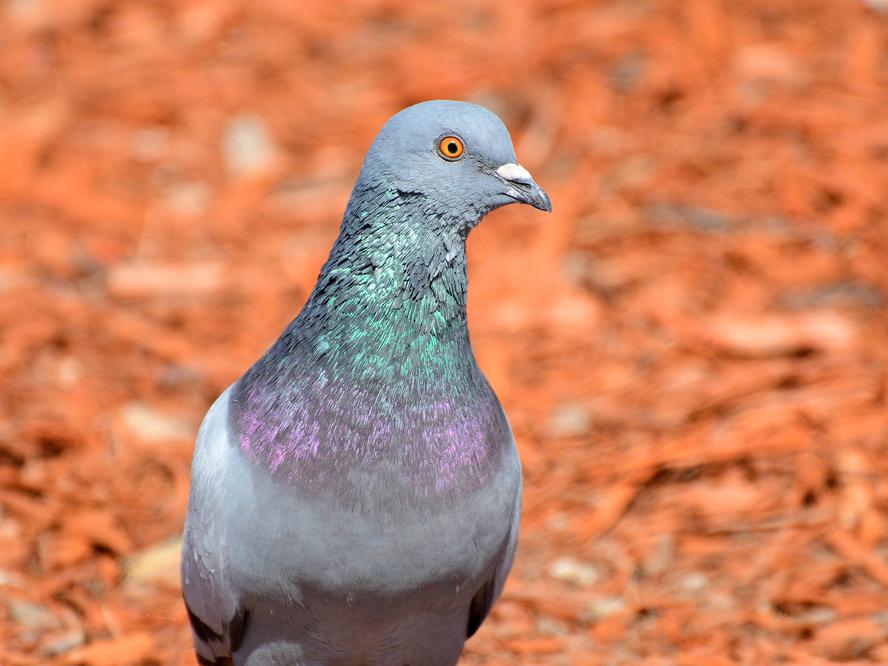Jump to Section
What is a Group of Pigeons Called? (Complete Guide)
Last updated: 18 September 2023

Pigeons of the family Columbidae are ubiquitous throughout much of the world, from the deepest tropical rainforests to the tallest urban tower blocks. Pigeons are some of the most successful animals on the planet and exhibit a wide range of highly interesting and complex behaviours. They’re also generally communal and gregarious birds, so what is a group of pigeons called?
The most common collective noun for a group of pigeons seems to be quite simply a flock of pigeons. Pigeons in flight are often called a flight of pigeons. In the pigeon breeding industry, groups of pigeons are often called kits.
Pigeons and doves form some 300 species with extraordinary diversity spanning the humble Wood Pigeon to the incredibly ornate Crowned pigeon. Read on to discover more interesting facts about groups of pigeons!

A flock of pigeons, gathered in the street
Other terms for a group of pigeons
A band of pigeons
A dropping of pigeons
A kitte of pigeons
A loft of pigeons
A passel of pigeons
A plague of pigeons
A school of pigeons
A stool of pigeons
Do pigeons flock together in groups?
Pigeons do flock together in groups, sometimes in smaller groups of some 20 or so birds, or sometimes in much larger flocks of many thousands of birds. Urban colonies of Feral pigeons can be exceptionally large also, often feeding and roosting communally in pretty much any space they can find.
Pigeon flocks generally form outside of the breeding season, at which point pigeons break off into their mated pairs to nest and rear their chicks, called squabs. When winter arrives, pigeons often roost communally in both small and larger groups, usually within woodland or forested areas, buildings or other high-up protected spots.
This does depend on the species of pigeon, as some, such as the Victoria crowned pigeon, are more likely to stick only to very small flocks or remain in their mated pairs for much of the year. Overall, though, pigeons are highly gregarious birds that are much more likely to flock together than stay isolated from one another.

Close up portrait of a Rock Dove, also known as a Feral Pigeon
Why do pigeons flock together?
Pigeons flock together for much of the non-breeding season. One of the main advantages of this is strength in numbers and protection against predation both on the ground from foxes, cats, weasels, stoats, ferrets, etc, and in the air, from goshawks, sparrowhawks, falcons and owls.
In one scientific study in Royal Holloway, London, pigeon flocks were found to provide ‘selfless’ protection from flying predators like hawks. In this experiment, pigeons were found to behave collectively when under attack from a predator to reduce the odds of any single pigeon from being caught, rather than acting selfishly to save themselves.
Another reason why pigeons flock together is to travel. Most species of pigeons and doves are non-migratory, so do not travel very long distances. However, they have been found to roam their resident countries, flying long distances in the process. When they do this, they’ll likely travel in flocks rather than alone or in pairs.
Wood pigeons in Europe may fly several hundred kilometres between food abundant fields, whereas other species of tropical pigeons like the Nicobar pigeon fly in flocks between island habitats. Flocks of flying pigeons have a complex hierarchy system that allows different birds to cycle in their leadership in the flock.

A large flock of Wood Pigeons flying together
When do pigeons flock together?
Many species of pigeons flock together for most of the non-breeding season. Whilst some flocks of pigeons are fairly small numbering 100 or fewer birds, many are thousands strong.
Pigeons are strong communal feeders and will often flock towards areas of food abundance, e.g. farmer’s fields. They’ll fly between food-rich areas, often in large flocks.
Many pigeons roost communally over the winter too, sharing neighbouring tree-tops or building spaces. Overall, pigeons are communal and gregarious birds that flock together for much of the year. The only time pigeons are likely to be isolated from the flock is during the breeding season where mated pairs break away to prepare a nest and rear young.

A group of pigeons perched together in a tree
Do pigeons migrate together?
Many species of pigeons do not migrate at all and some are quite sedentary, not straying particularly far from the areas they were born in, provided they remain safe and abundant in food. When non-migratory pigeons move further afield, e.g. in search of food or better shelter, they will usually fly in flocks.
Other species are partially migratory, depending on where they are distributed. For example, species of pigeons distributed across the north of the United States and Canada and northern Europe do tend to ‘fall back’ to warmer areas during winter, and some European residents may find themselves as far south as the Middle East and Africa.
There are migratory species of doves, such as the Turtle dove, who are summer residents in central and northern Europe before migrating some 5,000km back to West Africa. When pigeons (or doves) do migrate, they’re very likely to travel in large flocks of near or over 100 birds.

A group of Turtle Doves during migration
How many pigeons are in a flock?
The number of pigeons in a flock can massively vary. If we consider two of the most common types of pigeon, the Wood pigeon and the Feral pigeon, then flocks can easily number well into the thousands. However, not all species of pigeons are that abundant.
Do pigeons live in flocks?
Most species of pigeons live in flocks throughout much of the year. They join the flock either as a single, unmated juvenile or as a mated pair. Many flocks contain equal numbers of males and females, but juvenile pigeons also join large pigeon flocks to find a mate.
Many species of pigeons both feed and roost communally. Whilst they’re generally territorial birds during the breeding season especially, pigeons are often observed to exhibit cooperative and egalitarian behaviours.

A pair of Wood Pigeons
What is a pair of pigeons called?
There is no specific name for a pair of pigeons. All pigeons and doves are generally monogamous and form strong life-long bonds with their partners. Pigeons join flocks as mated pairs where they’ll remain for much of the year until breeding season. During the breeding season, pigeon pairs will break away from the flock to begin preparing a nest.
Do homing pigeons travel alone?
Homing pigeons are mostly descendants of the Rock dove, selectively bred for their homing abilities. Homing pigeons and carrier pigeons are one of the same - carrier pigeons are pigeons trained to carry messages and their use dates back to some 3000BC.
Carrier pigeons made possible what is perhaps the world’s first air postal system, the Great Barrier Pigeongram service.
Homing pigeons can indeed travel alone but often prefer to travel in pairs, even if this means they expend more energy, according to a study published in PLOS Biology. This is because homing pigeons that travel together are better at navigation - they literally share the job of ‘reading the map’. Despite many pigeons not being naturally migratory, they have excellent long-distance flying capabilities and stamina.

A group of homing pigeons in a dovecote
What is a group of baby pigeons called?
There is no specific name for a group of baby pigeons (squabs), but juvenile pigeons do join larger flocks of pigeons where they can observe and learn behaviours and later on, find a mate amongst unmated singles in the flock.
Baby pigeons (squabs) are notoriously hard to spot in the wild despite adult pigeons being seemingly everywhere. This is partly because squabs are quick growers that remain in their nests for a while, emerging once they look like juveniles rather than babies. Juvenile pigeons are only identifiable for maybe around 1 year before they resemble a fully grown pigeon.

A flock of messenger pigeons
What is a group of carrier pigeons called?
A group of carrier or homing pigeons is often simply called a “homing of pigeons”. Homing pigeons are pigeons bred and trained for their navigational skills. They can be trained to head ‘home’ from their location up to a range of around 600 miles, and do not even need to be taught a specific route - they can fly ‘home’ from wherever they are taken to.
Pigeons have an exceptionally good sense of direction, so good in fact that homing pigeons were some of the greatest heroes of World War 1 and World War 2. Considerably more pigeons have won the Dickin Medal - a medal that honours the bravery of animals - than any other animal (32 in total).
The science behind the ability of homing pigeons is quite incredible, and we’re still learning more about it today. Pigeons have powerful internal compasses and can also sense, or see, the Earth’s magnetic fields, which essentially gives them a sixth sense.
This, combined with their strong memories and power of recall, makes them extraordinarily good at navigation and travel.
On this page
- Other terms for a group of pigeons
- Do pigeons flock together in groups?
- Why do pigeons flock together?
- When do pigeons flock together?
- Do pigeons migrate together?
- How many pigeons are in a flock?
- Do pigeons live in flocks?
- What is a pair of pigeons called?
- Do homing pigeons travel alone?
- What is a group of baby pigeons called?
- What is a group of carrier pigeons called?







